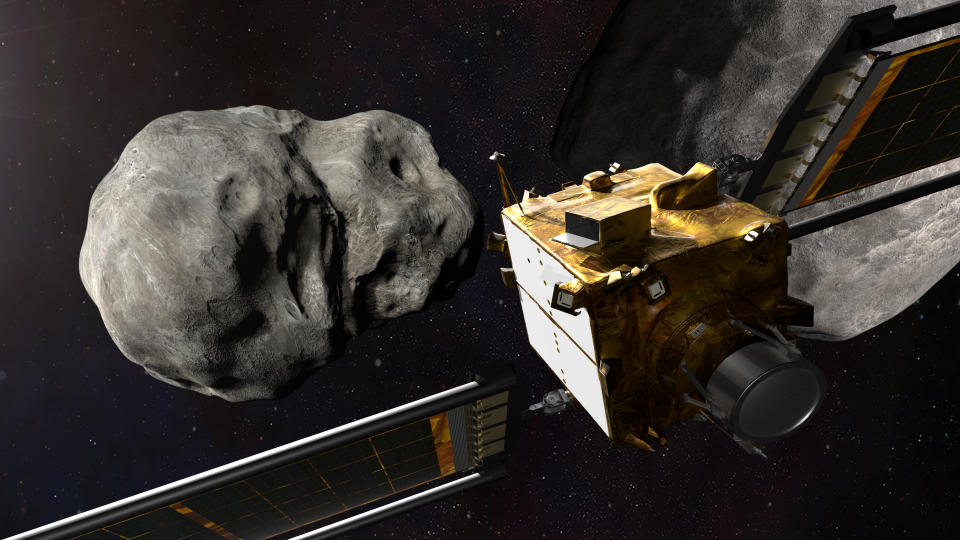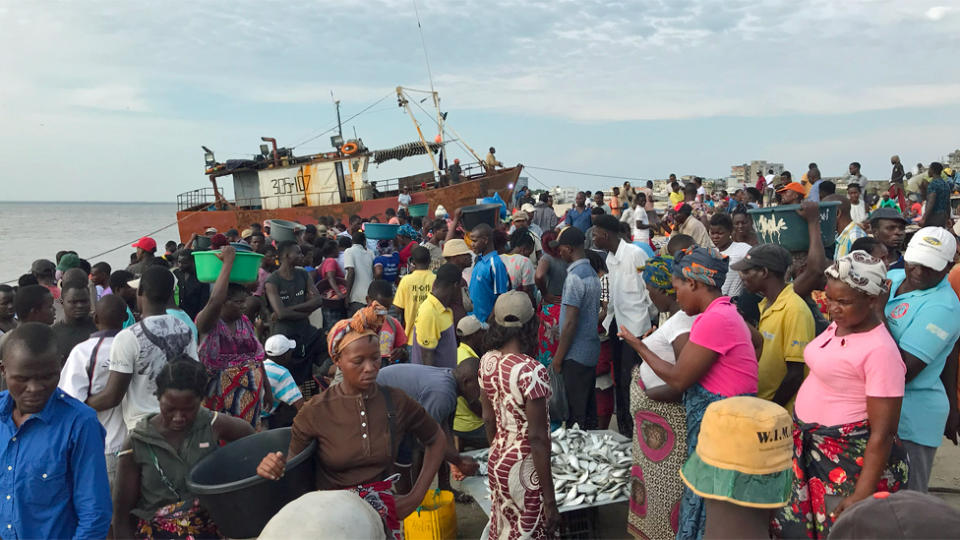NASA has a backup astronaut standing by for the first human moon mission in more than 50 years, which will lift off no earlier than 2025.
NASA astronaut Andre Douglas will serve as backup for the three U.S. astronauts on the Artemis 2 round-the-moon flight, the agency announced today (July 3). Douglas will back up commander Reid Wiseman, pilot Victor Glover and mission specialist Christina Koch. Canadian Space Agency (CSA) astronaut Jeremy Hansen, who is also a mission specialist on Artemis 2, already has a backup: astronaut Jenni Gibbons, also with CSA.
“I’ve always been fascinated with new things. I like to develop things,” Douglas told Space.com in March about the Artemis program, which later this decade aims to put astronauts on the moon’s surface for the first time since 1972. “I really believe in pushing ourselves, in understanding what is our true potential: both me as an individual, [and] within all of us as a species.”
“This is the perfect place to be, where we’re going to push that boundary,” he said.
Douglas was selected as an astronaut candidate by NASA in 2021, and graduated to full astronaut status in March this year after passing his training. Prior to joining the agency, he served in the U.S. Coast Guard in numerous roles, and acquired several post-doctoral degrees in technical fields ranging from naval architecture to systems engineering.
Immediately before astronaut selection, Douglas was a senior professional staff member at the Johns Hopkins University Applied Physics Lab (APL) working on several high-profile space missions. “That was a favorite time,” Douglas said.
He was a fault management engineer, for example, on NASA’s Double Asteroid Redirection Test (DART). The historic mission was the first to successfully change the orbit of an asteroid moonlet around a larger space rock after a deliberate 2022 collision.
“I was writing scripts of a software project to help put the spacecraft in a safe mode, if anything was anomalous,” Douglas said, noting the mission was “very awesome” as it demonstrated kinetic planetary defense against hazardous asteroids is potentially workable.
Additionally, Douglas worked on a major instrument for the Martian Moons Exploration (MMX) mission, scheduled to fly to the Red Planet in late 2026. The instrument is called MEGANE (Mars-moon Exploration with Gamma Ray and Neutrons) and will support a major mission goal of learning the composition of Phobos and Deimos, the two moons of Mars.

In May, Douglas even tried moonwalking simulations in the field: he worked for a week at the San Francisco Volcanic Field near Flagstaff, Arizona, alongside NASA astronaut Kate Rubins, to test out updated spacesuits in the moon-like desert area during daylight and nighttime conditions.
“Andre’s educational background and extensive operational experience in his various jobs prior to joining NASA are clear evidence of his readiness to support this mission,” Joe Acaba, chief astronaut at NASA’s Johnson Space Center in Houston, said in the agency statement about the Artemis 2 backup selection.
“He excelled in his astronaut candidate training and technical assignments,” Acaba added, “and we are confident he will continue to do so as NASA’s backup crew member for Artemis 2.”
RELATED STORIES:
— NASA astronauts practice ‘moonwalking’ in the Arizona desert (photos)
— NASA graduates new astronaut class as it begins recruiting for more
Artemis 2 is leaning on a diverse set of experience in its crew: Glover, Koch and Hansen will be the first Black person, woman and non-American to go around the moon, respectively.
Earlier this year, the mission liftoff was pushed back nine months to September 2025 to account for extra testing on the heat shield, among other critical items. Artemis 3, a landing effort, is expected to happen no earlier than 2026.
In interviews with Space.com in May, three of the Artemis 2 crew members (Koch was not available) emphasized that developmental missions must move at the pace of safety and learning, and that meeting schedules is not the objective.
“At the end of the day,” Hansen told Space.com at the time, “I think it’s also important to recognize we will never be able to make this risk zero. We will learn everything we can in our testing facilities, and [in what] science can achieve on the ground. And then ultimately, we’ll still have some unknown risk that we’ll have to accept.
“But that’s part of space exploration.”
Signup bonus from




